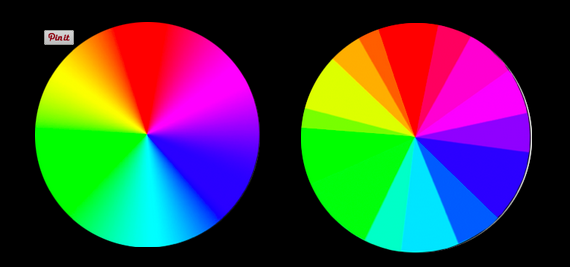
THE EFFECTS OF LANGUAGE ON COLOR PROCESSING
Languages across the world divide color space differently. For example, the English language color terms green and yellow can be used to describe all the colors in figure below. Korean speakers divide the same color space into three words: “cho-rok” (forest green), “yeon-du” (yellow-green), and “no-rang” (yellow).
Unlike English speakers, Koreans make an obligatory distinction between these green and yellow-green as well as yellow-green and yellow. The English language speakers make only the distinction between green and yellow, which takes place in a different part of the color spectrum than the Korean divisions occur. Like other basic color words, “cho-rok,” “yeon-du,” and “no-rang” tend to be learned early by Korean children and share many of the usage and behavioral properties of other basic color words. There is no generic word for green. In a color vision experiment, I investigated if the differences between languages lead to discrepancies in people’s perception of color.
SECTOR A: Science and Philosophy of Seeing

 Visual Studies
Visual Studies